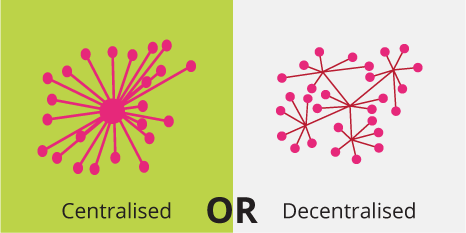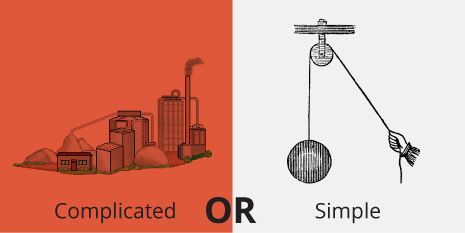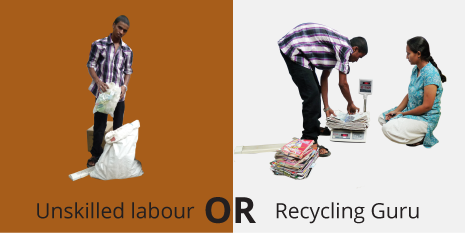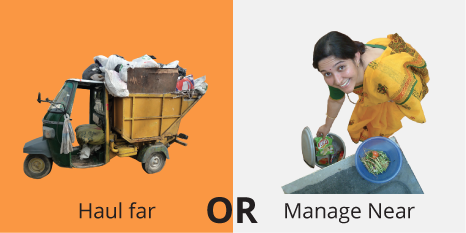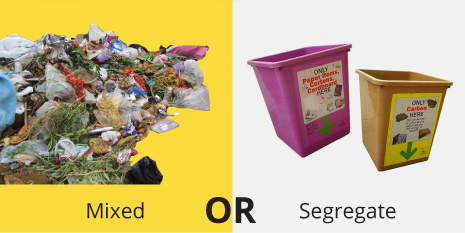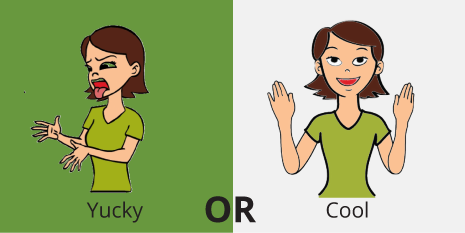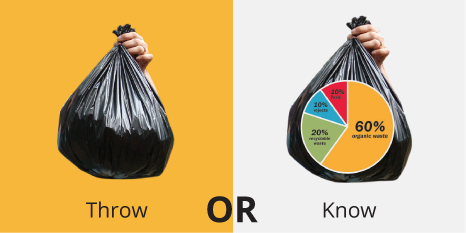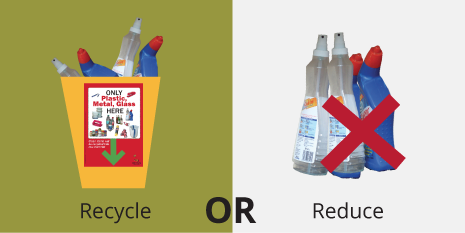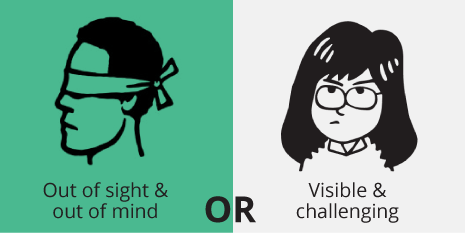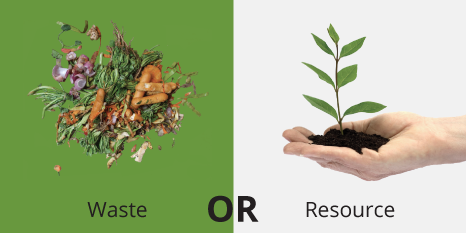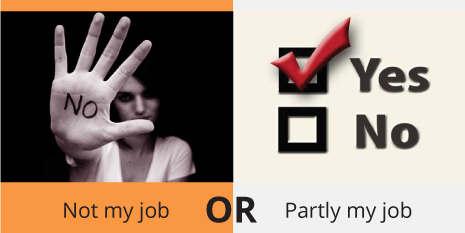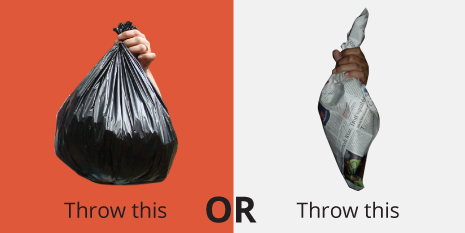About Daily Dump
We know that small steps can have a big impact.
We believe that composting sets you off on a journey of discovery
of the interconnectedness of things.
We are a design led brand that believes everyone wants to make a difference.
Everyday our customers keep tonnes of organic waste out of landfill with no cost to government.

Why we do what we do
The PM wants a Swacch Bharat, a clean India. You want a clean India. We want a clean India. At DD, we believe that for this to happen, Indians must change their perception and behaviours - around waste.
When we started Daily Dump in 2006, our vision was to constantly re-imagine our relationship with the earth, with each other and with our urban spaces. Essentially, we are in the mindset changing business - mindsets about “waste”, about marginal livelihoods, about whose job it is to take care of “waste”, about how we can harm less, etc.
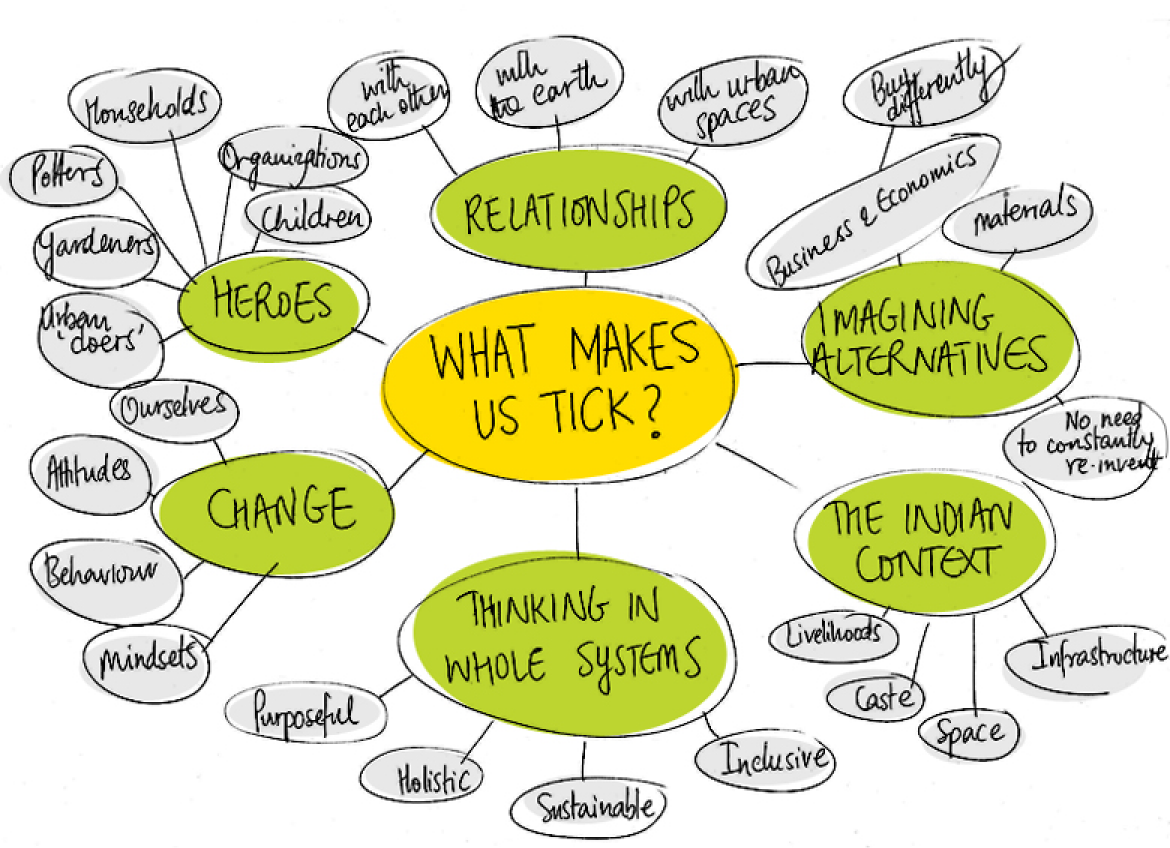
Ours is a design led company where we use design to help imagine alternative scenarios that can help change behaviour. We are mindful of looking at whole systems and understand that the context of India has its own challenges. Our objective is to reduce waste, improve material recovery, enable better livelihoods and to do this through the voluntary collective action of urban citizens.
We salute the potters, the gardeners, the householders, the organisations, the 'recycle gurus', the children - everyone who helps make Earth (and India) a cleaner, greener, sustainable place to live. They are our heroes - the torch bearers of the movement of Swacch!
See the different aspects of our work
Changing mindsets through design
These are the different mindsets and beliefs we encounter everyday. We have visualised them to help us explore our collective unconscious entrenched positions. Very often these dictate our decisions and if we do not examine these afresh, then we believe we cannot really step out to find new possibilities. We use these in our discussions with policy makers and clients.
Design Solutions of Daily Dump
Solutions that enable citizens be a part of the cleaning up our cities
-

Problem
Many people have never considered composting as an alternative waste management process.
Objective
To convert them into "believers".
Our Design Solution
We convince them, and provide “good” answers to their concerns. Our iconic visuals are used by many communities to convince their members about the facts around “waste”.
-

The widespread perception of waste management as something that the Government has to do. Composting is "not my job".
To get them to take ownership for managing their waste. To remove caste and class associations with waste.
Our product service system makes them self-driven composters, not motivated by any extrinsic reward/ device. We make it a 'cool' activity, rather than a chore (that is cumbersome, time-consuming etc). Caste and class barriers are constantly challenged through our work. The Recycle Guru project highlights the intrinsic expertise that we have not acknowledged of these green professionals.
-
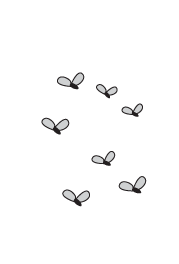
The smell and flies that are normally associated with garbage need to be 'managed'.
To eliminate flies and odour. To introduce new smells into the process that are natural. (To gain acceptance of the presence of a few flies).
Our experience over the years has led to solutions that are tested in the field and makes sure that bad odour is avoided if our simple process is followed. Our fun visualisations help overcome negative connotations around bad odour and show our customers that if managed well, this is ahygienic process.
-
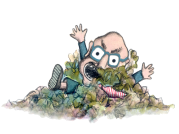
The fear of having to do it yourself – "What if I don't do it right?... and create a bigger mess!"
To create a feeling of being supported – that help is just a phone call away.
Strong service design and back end support material helps build a reassurance in our customers minds.
-
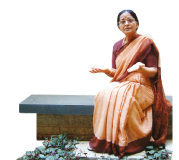
"We don't live in houses with large garden areas anymore. So how will I compost?
Are there products to help me do this?"To design, manufacture, distribute and service a range of products that are
1. Functional
2. Affordable
3.Sustainable
4. AestheticThese products are:
1. Easy to use
2. Fit into Indian ways of living
3. Easy to maintain
4. Made of simple materials
5. Use appropriate technologies -

Where can I find information about composting that is relevant, contextual and easily available as and when I need it?
To have very visual material, that is easy to understand by our target customers and also try and make it available in different Indian languages.
We communicate to clarify, provoke, amuse and make waste fun and cool! We do this without intimidating or using too much jargon. It encourages readers to become doers. People copy our material and use it to infect others with the "clean" bug. "How to...,FAQs, Troubleshooting, Success stories and more - dailydump.org has become the go-to site for waste in India.
Founder, Poonam Bir Kasturi’s note on...
Why design this way?
This project evolved without a project report – I see this project also as a culmination of the conversations I have had with many of my students and peers over the years and the varied ideas that have informed and excited me as a person. Ideas from systems theory, sustainable development, design methods, sacred geometries, craft development, Indira Darshinis (standup Indian fast food places), the open source movement, micro-enterprise, facilitative processes and design - have all influenced the project.
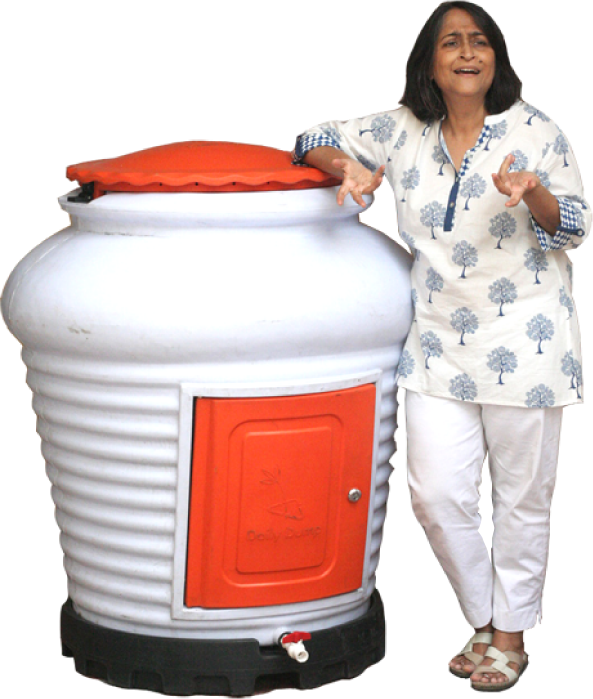
Also perhaps I believe in the following:
“The distinguished systems theorist Russ Ackoff describes a common trap that guides all the work our globalised world tends to do as "doing the wrong thing righter."
"The righter we do the wrong thing," he explains, "the wronger we become. When we make a mistake doing the wrong thing and correct it, we become wronger. When we make a mistake doing the right thing and correct it, we become righter. Therefore, it is better to do the right thing wrong than the wrong thing right. This way we learn and actually get righter. Most of our current problems are, he says, the result of policymakers and managers (and designers) busting a gut to do the wrong thing right.”
Source: http://www.hindu.com/2006/10/06/stories/2006100601871300.htm
So I chose to design this project in the manner I did because...
-
ONE
We are living in an “Also and Also” world (Richard Saul Wurman)- Technology has its place and so does natural systems. Composting is a natural process – it’s been perfected by the universe and natural systems in a profoundly evolutionary way. I asked what do I need to do to it, to make it part of everyone's behaviour? (in India, in Bangalore to start with- not the world) If I can achieve this being mindful of the whole system that waste in India is located in - then what should the design be - of the product? Everyone I spoke to, said it would not stick, no Indian would be willing to do this, it was a dirty process. So I began with a product that did not look dirty but was also ordinary, so unthreatening that it would seem like nothing at all. I wanted to create something that was so “ordinary” that it would fly under the radar of the grandmasters of waste - the municipality, contractors, experts and naysayers. It would not be perceived as a threat, so it had greater chances of being adopted without being snuffed out pre-maturely by some large technological promise or a large business imperative. I was willing to accept uncertainty, and being ready to participate and learn from the first prototypes in the market with the hunch that the inherent beauty of a natural process and urgency of keeping 60% out of landfills will finally find some traction.
Innovation is not just about inventing new products and services; today it is to a greater degree also connected with other ways of doing business or changes in organizational structure. - Index 2007 Magazine
-
TWO
Also terracotta after my initial tests with materials - was the best material to support the decomposition process. Plastic didn't breathe. Because terracotta had no perceived value, was heavy and fragile I had to design around our "convenience" hang-up. - Design had to build value in the face of these factors. The beauty of the material and the hand crafted form helped take composting away from the “yuck” backyard space to the “cool” garden space. Our customers again and again showed us that they preferred this “heavy” “fragile” product over the plastic DIY versions, only because they could see a value even though they found it hard to articulate the reasons. I suspect that reasons are to do with a part of us that respects the labour of the hand, the connections between natural cycles and the magic of composting happening in the bowels of a mud pot.
“Leading from good to great does not mean coming up with answers and then motivating everyone to follow your messianic vision. It means having the humility to grasp the fact that you do not yet understand enough to have the answers and then to ask the questions that will lead to the best possible insights. - Jim Collins, ‘Good to Great’
-
THREE
We can all personally own and enjoy a window into this natural process - we can dig our hands into the pile and feel the heat and generate our own understanding of ourselves, the earth - why should a designer stifle this window and dress it with something else? The design question was - how can a designer enlarge it?
Technology is transformed overnight; mentality takes generations to alter. Who can blame us for thinking technology will cure all that ails the workplace. It’s so much easier to acquire. - Ricardo Semler, ‘Maverick’
-
FOUR
The economies and technology of small production have stood the test of time and worked for India - especially in the area of crafts. Now with the global changes, it was important to see if our work could do something for these gifted artisans that ensured they had access to more than just “orders”. Over the past 8 years, they have grown in wealth but in the next 10 years we want to co-create a more robust platform for them to do business. For this it is important composting goes national and we can involve more potters across the country to get the critical mass to build something that benefits them in a transformative way.
We come back to the perspective of capabilities: that different sections of the society (and not just the socially privileged) should be able to be active in the decisions regarding what to preserve and what to let go - Amartya Sen, 1999
-
FIVE
I began with the idea of open source and used the creative commons attribution, share-alike and non-commercial licence. Over time I found that people equated the idea of open-source with “free”. Not understanding that the commercialisation of our designs meant a fee to be paid to us. We spent so many hours supporting requests that our financial sustainability was threatened. We also had experiences when interns went off with our research work and cited it is their own. So after 8 years of sharing our drawings and sharing our time we decided to re-look at how we have to deal with the freeloading “copiers” who do not want to pay a single paisa. Now we have a formal partner relationship process in place, and this works.
"We should not underestimate the crucial importance of leadership and design joining forces. Our global future depends on it. We will either design our way through the deadly challenges of this century, or we won't make it. For our institutions - in truth, for our civilization - to survive and prosper, we must solve extremely complex problems and cope with many bewildering dilemmas. We cannot assume that, following our present path, we will simply evolve toward a better world. But we can design that better world. That is why designers need to become leaders, and why leaders need to become designers." -Richard Farson, Management by Design, 2000
Also and Also.
Also people – lots of them have shaped it in many ways – so this project does not belong to me alone – it belongs to the many that will shape it as time moves on. This project therefore is dedicated to everyone who wishes to do something about the things that bother them around their world.
FAQs about Daily Dump
Answer
We launched the Daily Dump on 14th April 2006. I had done 2 years of intermittent research before that on the products and process.
Answer
Two of my ex-students, Kanikya Kini, Shashwati Balasubramaniam and I were the core team who created the first lot of communication material and implemented the launch.
Answer
I graduated in Product Design in 1985 from the National Institute of Design. I worked in small scale manufacturing after college and then set up a craft based design company called Industree with two other partners. After 5 years I set up Playnspeak a proprietorship concern to make products for the home and meanwhile I also was the founding faculty of Srishti School of Art, Design and Technology in Bangalore. I moved on from the school in May 2008.
Answer
Every interview I am asked this question. The short answer is I did not find it, it found me. Really! Yes, I was on the road asking various questions, like most people, questions about how best to occupy one's time, what is real quality, should one make an impact, the difference between impact and transformation, …well ….and then I guess you get started by a project. So Daily Dump happened.
And why do I think it's special ....... You are an ordinary Indian. You are tired of words, you want to contribute in a tangible, direct manner to the mess you see around you. You hear about Daily Dump. Hmmmm, you say, it seems so simple, what took it so long to arrive? That's what is hot about Daily Dump. Its a simple but immediate first step for every Indian who wants to make a difference to the waste issue in our cities. It's so simple that anyone can do it! From a larger perspective, the solutions emphasise that waste (like water, education, equity and dignity) belongs to "all of us" - we cannot abdicate responsibility only to the politicians, lobbyists, or big corporations. Our vision is to make a large impact through a large number of people in a way that is sustainable, dignified and is fun! Also I am an India Addict! I believe that design can do wonders in India. Read my paper on this .Answer
I wanted ordinary Indians to feel empowered to make a difference to the waste surrounding them. Your home waste is 50 - 70 % organic, so keeping this off the streets can reduce the mess on the streets by 60%, that's a big impact!
Answer
Our research revealed a lot about people's perceptions on waste and their willingness to do something about it. We created our challenges from these findings and they are available here...
Answer
I had a team of colleagues during the initial stage of prototyping when we were experimenting with the terracotta designs. Prof. Achuta Rao, Uma Chandru, Sudipto Dasgupta, James Fathers, Kamya. Then it was the potter Ramkrishnapa and me.
All the other products - the Manthan, Aaga and the Leaf composters have been designed by me. Most of the communication material has been art directed by me and the production has been a collaborative exercise with many talented designers, artists and mavericks.Answer
From my personal savings.
Answer
The terracotta range was designed to be "copied". In the sense that it is so simple - anyone who had the will to duplicate it, could do it. So if the potters all over the country could get good rates in the market because we opened it up, that was fine. So, no, I am not worried.
Just get annoyed when people equate our efforts to put a lot of free stuff on the web as an open licence to make unreasonable demands on our time and expertise.Answer
We have many plans, the issue is that over the last years, we have learnt that this is a business that goes beyond mere financial returns. All our outreach partners work with us because they like our approach to this issue, they like our solutions and they like our style. They feel fulfilled engaging with their fellow citizens and having conversations about change. So we intend to scale using this as our spring board. Let's see where this leads us!
Answer
If composting becomes a national habit, then the purpose of Daily Dump is well served. That the design and construction of residences, offices, apartments and other buildings take into consideration the need for segregation, collection, storage, disposal and composting on site as a mandate. That composters become as ubiquitous and in demand as swimming pools and clubhouses in residential complexes.
Answer
People like my late father Raghbir Singh Bir (one of India's early designers), my family (their work ethic), Kiran Bedi, Ela Bhatt, Mother Teresa, Anil Agarwal of CSE, and Ricardo Semler and many others.

